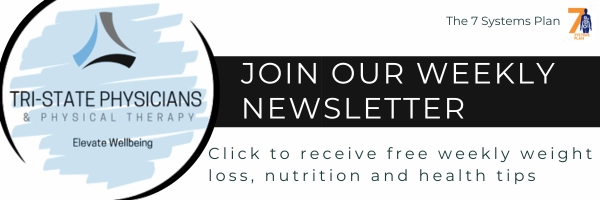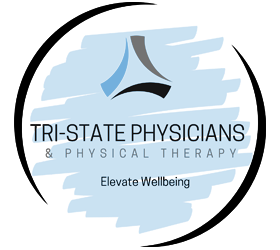The Truth About Lectins in South Sioux City NE
Unveiling the Controversy
The topic of lectins has become a hotbed of debate within nutritional science and the health-conscious community. There is plenty of misinformation circulating, so let’s dive into this topic and look at the scientific evidence.
Lectins in South Sioux City NE , proteins found in various plant foods, have been vilified and celebrated, leaving many to wonder where the truth lies. Is the concern surrounding lectins warranted? This exploration aims to dissect the lectin controversy for a comprehensive understanding of its role in our diet and health.
Origins of the Lectin Debate
Lectins are present in many foods, including beans, grains, nuts, and certain fruits and vegetables. These foods offer numerous health benefits when consumed as part of a balanced diet and after proper preparation. However, lectins serve as a plant’s natural defense mechanism against predators, including humans. They can pass through the stomach and intestinal lining unchanged, resisting digestion, sometimes leading to gastrointestinal disturbances or other health issues.
This indigestibility has catapulted lectins into the spotlight as a dietary concern.
The Case Against Lectins
Central to the anti-lectin argument is the assertion that lectins are harmful “antinutrients,” substances that can interfere with the body’s ability to absorb essential nutrients.
Critics, like Dr. Stephen Gundry, author of “The Plant Paradox,” argue that lectins can wreak havoc on the gut microbiome, increase intestinal permeability (leaky gut), and even contribute to chronic inflammation and autoimmune diseases. These claims have led to a growing movement advocating for a lectin-free diet, asserting that eliminating lectins can lead to better health and well-being.
Scrutinizing the Evidence in South Sioux City NE
Much of the evidence cited by opponents of lectins comes from studies on animals or in vitro research, which cannot always be directly applied to humans. For instance, feeding animals large quantities of isolated lectins or raw bean powder does not accurately reflect how humans consume these foods.
Moreover, most research fails to consider the mitigating effects of traditional food preparation methods, such as soaking, fermenting, and cooking, which significantly reduce lectin content.
Nutritional Value of Lectin-Containing Foods
It’s crucial to recognize that foods high in lectins are also some of the most nutrient-dense available. Beans, whole grains, and vegetables are rich sources of fiber, vitamins, minerals, and antioxidants, offering many health benefits. Focusing solely on the potential negatives of lectins might overlook the positive impacts these foods have on heart health, weight management, and chronic disease prevention.
Lectins are found in legumes, nuts, grains, fruits, and nightshade vegetables. While the amount of lectins in individual foods varies, typically, these foods contain the highest amounts:
- Beans
- Peanuts
- Lentils
- Tomatoes
- Potatoes
- Peas
- Soy
- Barley
- Eggplant
- Fruits
- Wheat
- Rice
Health Benefits of Lectins: A Different Perspective
Lectins have been controversial due to their potential adverse effects when consumed in large amounts or from improperly prepared foods. However, foods containing lectins offer numerous health benefits when consumed as part of a balanced diet and after proper preparation.
Emerging research suggests that in moderate amounts, lectins contribute to health in various ways:
1. Support for Weight Management
Slow Carbohydrate Absorption: Lectins bind to carbohydrates, slowing digestion and absorption. This delay helps manage blood sugar levels and contributes to a sustained feeling of fullness, potentially aiding in weight management.
2. Protective Effects Against Diabetes
Blood Sugar Regulation: By slowing down the absorption of carbohydrates, lectins can help stabilize blood sugar levels. This management is beneficial in preventing blood glucose spiking, crucial for managing and preventing type 2 diabetes.
3. Contribution to Cardiovascular Health
Lowering Cholesterol: Foods high in lectins, such as legumes, can help lower LDL (harmful) cholesterol levels. They’re also rich in dietary fiber, known for its heart-healthy benefits.
Blood Pressure Regulation: Some lectins positively affect blood pressure, contributing to overall cardiovascular health.
4. Anti-cancer Properties
Inhibition of Cancer Cell Growth: Certain lectins bind to cancer cells, potentially preventing their growth and spread. For example, lectins in foods like beans and fruits have been explored for their anti-cancer effects.
5. Immune System Support
Modulation of Immune Function: Lectins play roles in immune response and cell signaling, which helps defend against pathogens. They might also work to identify and destroy cancer cells.
6. Gut Health
Promotion of Gut Health: Some lectins act as prebiotics, supporting the growth of beneficial gut bacteria. A healthy microbiome is crucial for immune function, digestion, and nutrient absorption.
7. Anti-inflammatory Effects
Reduction of Inflammation: The anti-inflammatory properties of specific lectins can contribute to reducing chronic disease risk related to inflammation, such as heart disease and some forms of cancer.

Lectins and the Concept of Hormesis
The principle of hormesis is the idea that exposure to low levels of stressors can enhance the body’s adaptive response and overall health. Just as moderate exercise stresses and strengthens the body, moderate lectin consumption might similarly activate beneficial stress-response pathways. This view supports the idea that lectins optimize health in the context of a varied and balanced diet.
Practical Advice for Navigation
Given the evidence, a lectin-free diet is not necessary for most people. Instead, focusing on proper food preparation can neutralize potential risks. Soaking beans overnight, for instance, reduces their lectin content. Similarly, cooking methods like boiling and pressure cooking can effectively eliminate lectins from foods with high levels.
Canned beans are a quick, easy, and healthy option for those looking to reduce their lectin intake. The cooking process breaks down the lectins, making them safe to eat. Plus, canned beans are already cooked and packed in liquid, so all you need to do is open the can and heat them up.
Embracing these traditional practices allows us to safely enjoy the benefits of lectin-containing foods.
Personalized Nutrition: Listening to Your Body
While the general population can safely consume lectin-containing foods with appropriate preparation, individuals with specific health conditions may need to pay closer attention. Those with autoimmune diseases, irritable bowel syndrome (IBS), or other gastrointestinal sensitivities might find that reducing lectin intake helps manage their symptoms. These exceptions emphasize the importance of personalized nutrition and listening to one’s body to identify foods that cause discomfort or exacerbate health issues.

Finding Balance
In the vast landscape of nutrition science, lectins are a prime example of how complex and individualized dietary health can be. While it’s clear that lectins can cause issues in some contexts, particularly when consumed in their raw form or by individuals with specific health sensitivities, the broad recommendation to eliminate them from the diet overlooks their significant benefits. These foods are integral to a diverse, nutrient-rich diet that supports robust health.
Proper food preparation techniques minimize potential risks and enhance the nutritional value of these foods, making them safe and beneficial for most people to enjoy. It is also worth noting that the human body is adept at handling a variety of foods, including those with lectins. The key is moderation and variety, ensuring we are not overloading or avoiding foods or food groups that could lead to imbalances or health issues.
Integrating Lectins into a Healthy Diet
For those concerned about lectins but wishing to retain the nutritional benefits of lectin-rich foods, the following strategies can be helpful:
- Soaking and Sprouting: Soaking beans and legumes overnight and opting for sprouted grains and seeds can significantly reduce lectin content while enhancing nutrient availability.
- Cooking: High-heat cooking methods, such as boiling, stewing, and pressure cooking, effectively neutralize lectins in foods known for their high lectin content, making them safe to eat.
- Diversification: Consuming a wide variety of foods prevents excessive intake of lectins from any one source and ensures a broad spectrum of nutrients, optimizing dietary balance and health.
- Listening to Your Body: Paying close attention to how your body reacts to different foods is crucial. Adjust your intake to manage symptoms if you notice discomfort or adverse reactions after consuming lectin-rich foods.
The Future of Lectin Research
As nutritional science advances, so will our understanding of lectins and their impact on health. Future research, especially studies involving human participants, will provide deeper insights into how lectins interact with our bodies and contribute to health and disease prevention. It’s crucial that dietary recommendations are based on reliable, evidence-based research rather than solely on anecdotal evidence or theories extrapolated from animal studies.
Embracing Complexity for Optimal Health
The lectin controversy underscores the complexity of nutrition and the importance of approaching dietary recommendations with evidence at its core, as we do with the 7 Systems Plan. While it is essential to be aware of potential dietary pitfalls, it’s equally important to recognize the value of diversity in nutrition. By focusing on balance and paying attention to how foods affect our bodies, we can navigate the complexities of individuality to support personal health.
In conclusion, lectins are neither villains nor heroes in this story; they’re simply one of many actors on the vast stage of nutrition. Understanding their role, mitigating potential risks through proper food preparation, and appreciating their place within a diverse and balanced diet are vital to leveraging their benefits while avoiding pitfalls.
For your health,
Dr. Pat
Video of the Week
Recipe of the Week
Teresa’s 7 Systems Kitchen
Split Pea Soup

Ingredients:
- One package (16 oz.) split peas
- 2 medium carrots, rough chop
- 1/2 cup celery leaves, chopped
- 1 medium onion, chopped
- Himalayan pink salt to taste
- 1/2 teaspoon black pepper
- One Bay leaf (optional)
- 6 cups filtered water
Directions:
- Sort peas and rinse. Place in large stainless steel pot and cover with filtered water.
- Soak overnight. Drain water and rinse.
- Add remaining ingredients, including 6 cups filtered water.
- Bring to a boil for 2 minutes.
- Reduce heat and simmer 4 to 8 hours, until peas are tender.
- Remove Bay leaf.
- Use immersion blender to blend, (be very careful because of the high temperature).
- Enjoy!
Sign up below to get our weekly newsletter
sent directly to your email inbox!
OFFICE HOURS
Monday
8:00am - 6:00pm
Tuesday
8:00am - 6:00pm
Wednesday
8:00am - 6:00pm
Thursday
8:00am - 6:00pm
Friday
8:00am - 6:00pm
Saturday
8:00am - 10:45am
Sunday
Closed
Tri-State Physicians &
Physical Therapy Clinic
3900 Dakota Avenue #6
South Sioux City, NE 68776




